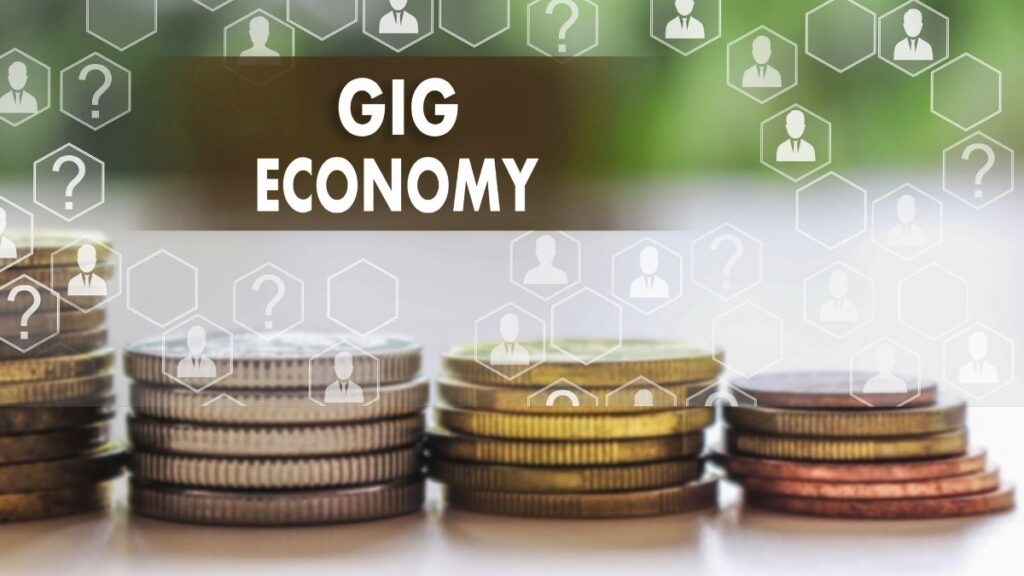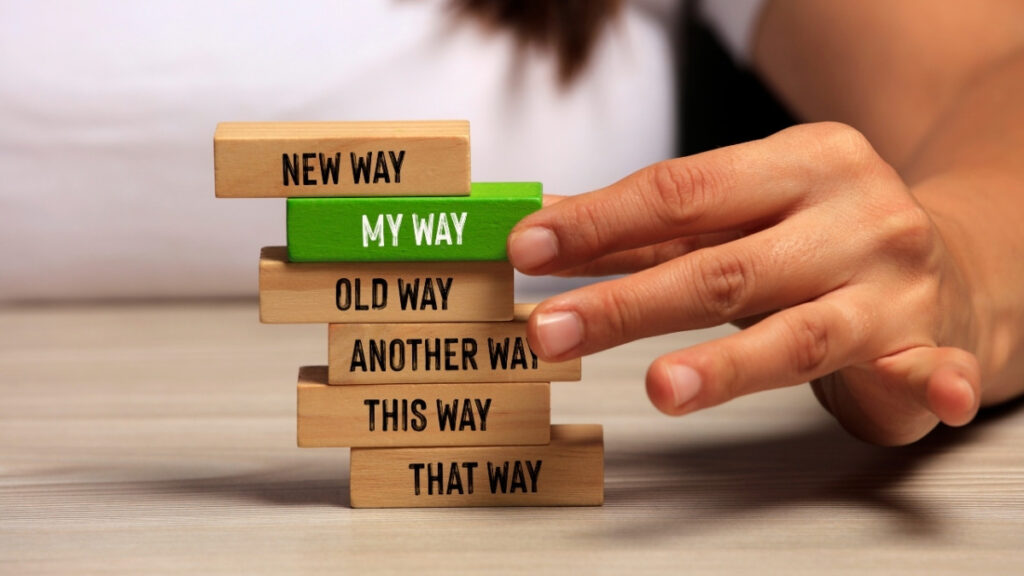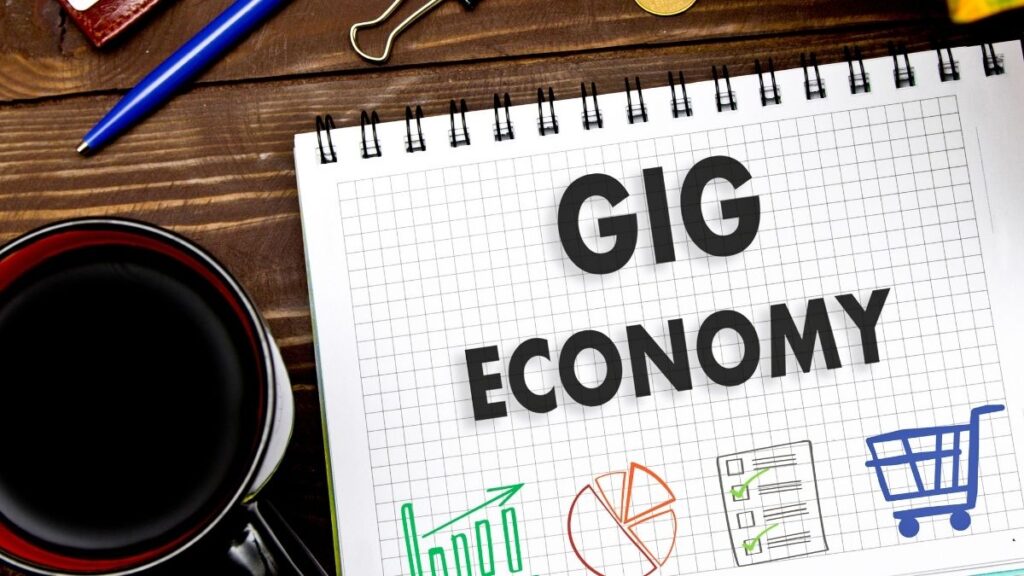After meticulously calculating the cost of gas, the estimated vehicle wear and tear, and the platform’s ever-increasing cut, a cold realization washed over Dustin: he had made less than his state’s minimum wage.
The “freedom” he had signed up for—the promise of being his own boss and setting his own hours—felt a lot like a trap. This wasn’t autonomy; it was a high-stakes scavenger hunt for scraps, dictated by an algorithm that cared nothing for his well-being.
That night, staring at a net profit that wouldn’t even cover a decent meal, Dustin knew something had to change. He wasn’t just tired of the grind; he was fundamentally rejecting the broken promise of the gig economy.
The Gig Economy’s Gilded Cage: Trading Freedom for Financial Fear
It was 2 AM on a Tuesday, and Dustin was sitting in his car in a desolate suburban parking lot, the glow of his phone illuminating the greasy smear on the passenger seat from the last food delivery.
He had just finished his 12th run of the night. After meticulously calculating the cost of gas, the estimated vehicle wear and tear, and the platform’s ever-increasing cut, a cold realization washed over him: he had made less than his state’s minimum wage.
The Breaking Point

The “freedom” he had signed up for—the promise of being his own boss and setting his own hours—felt a lot like a trap. This wasn’t autonomy; it was a high-stakes scavenger hunt for scraps, dictated by an algorithm that cared nothing for his well-being.
That night, staring at a net profit that wouldn’t even cover a decent meal, Dustin knew something had to change. He wasn’t just tired of the grind; he was fundamentally rejecting the broken promise of the gig economy.
The Seductive Promise That Lures Millions

Dustin’s story is not unique. The gig economy has become an economic force, reshaping the labor market with a narrative so powerful it’s hard to resist. It speaks directly to our deepest desires for control over our own lives.
Currently, around 59 million Americans, or 36% of the workforce, are engaged in freelancing, and this number is projected to swell to an astonishing 86.5 million by 2027—effectively half of the entire U.S. workforce.
The allure is undeniable and is rooted in a few core promises. A survey by FlexJobs found that the primary motivation for 70% of people entering the gig market is the pursuit of a better work-life balance.
This is followed closely by the desire to choose when to work (62%) and the ambition to be one’s own boss (49%). In a world of rigid 9-to-5 schedules and corporate hierarchies, the gig economy presents itself as a liberating alternative.
The Harsh Reality: A System Built on Precarity

Once you’re inside the cage, the gilded bars begin to rust, revealing the precarious structure underneath.
The flexibility so heavily marketed often masks a foundation of deep financial instability, a system that offloads all economic risk onto the individual worker. This harsh reality manifests in three distinct ways: an income trap, a volatility vortex, and a benefits black hole.
First, the income trap is a stark reality of suppressed earnings. While a handful of high earners exist, they are the exception, not the rule. Data from Prudential reveals that the average annual income for an independent worker is only $69,000, substantially less than the $80,116 earned by a full-time employee.
This gap is often because gig workers must work fewer hours than their traditional counterparts to manage the sheer exhaustion of the grind.
Further analysis shows that two-thirds of all gig workers earn less than $2,500 per month , and a shocking 29% earn less than their state’s minimum wage after accounting for expenses.
Even in the most common gig sectors like ridesharing and food delivery, the average monthly income is less than a quarter of that of a typical U.S. employee, suggesting most use it for supplemental income out of necessity, not as a viable career.
The Decision: From Renting My Time to Building My Future

That night in the parking lot, it became clear that the gig economy model was fundamentally, irrevocably broken. The problem wasn’t that I needed to find a “better gig” or work “smarter” within the system.
The problem was the system itself—a system designed to extract maximum value from my time while returning the bare minimum. I made a decision: Dustin would no longer participate in a model where I was renting out my time and my assets for diminishing returns.
Dustin would exit the system of being a temporary laborer and begin the journey of becoming a builder, an owner. His goal was no longer to survive the next month, but to build a future.
The Blueprint for Financial Sovereignty: A Four-Phase Strategy to Build an Income Engine
The escape from the gig economy’s trap begins not with a new app, but with a profound mental shift.
It requires moving from the mindset of a “Freelancer”—someone who trades their time and skills for a one-time payment—to that of a “Founder,” an individual who builds scalable, ownable assets. This is the core principle that separates the precarious from the prosperous.
The Mindset Shift: Stop Being a Freelancer, Start Being a Founder

The vehicle for this transformation is the booming Creator Economy. This sector, which reached a staggering $250 billion in 2024 and is projected to nearly double to almost $500 billion by 2027, is built on the premise of asset ownership.
Unlike the gig economy, where you are a cog in someone else’s machine, the creator economy empowers you to build your own.
Phase 1: Foundation — Nailing Your Profitable Niche

Every successful founder starts by solving a specific problem for a specific group of people. Your first phase is to identify this profitable niche.
The gig work you’ve been doing, while financially draining, has likely provided you with invaluable market insights and expertise that can now be leveraged.
The ideal niche exists at the intersection of three circles: your genuine passion, your demonstrable expertise, and proven market demand.
Validating market demand is not guesswork; it is a data-driven process. Start by using free tools like Google Trends to analyze the long-term interest in a potential topic.
Look for niches with steady or upward trends over the past five years, which indicates sustained relevance. Next, dive into keyword research using tools like Google Keyword Planner.
Your goal is to find high-volume, low-competition keywords, particularly long-tail keywords (phrases of three or more words) that signal strong user intent. For example, instead of the broad and competitive term “fitness,” a more strategic niche might be “at-home HIIT workouts for new moms.”
Phase 2: Asset Creation — Building Your Digital Product Suite

With a validated niche, the next phase is to build the assets that will become the engine of your new income. The key is to create scalable digital products—assets that can be created once and sold an infinite number of times with near-zero marginal cost.
A strategic way to approach this is with the “Product Ladder” concept, starting with low-effort products to generate initial revenue and build an audience before moving to higher-value offerings.
Rung 1: Low-Lift Digital Products. These are your entry point into the market. Think ebooks, digital planners, budget trackers, social media templates, or educational printables.
They are relatively simple to create using tools like Canva or Google Docs and can be sold at an accessible price point ($10-$50). This allows you to test your market, validate your product ideas, and begin building a customer base without a massive upfront investment of time.
Rung 2: Mid-Lift Digital Products. Once you have a small but engaged audience, you can move up the ladder to products that offer more depth and command a higher price.
This includes paid workshops, comprehensive “how-to” guides, or premium paid newsletters that deliver specialized insights directly to subscribers’ inboxes. These products solidify your authority in the niche and strengthen your relationship with your audience.
Rung 3: High-Value Flagship Products. The top of your initial product ladder is often a comprehensive online course.
The process involves choosing a specific, outcome-oriented topic, creating a detailed outline with clear modules and lessons, and recording engaging video content. Investing in good quality audio and lighting is crucial for a professional feel.
Phase 3: Systemization — Creating Automated Revenue Streams

Creating assets is only half the battle; the other half is building systems to sell them automatically. This phase is about moving from active selling to creating an automated revenue machine that works for you 24/7, smoothing out the income volatility that plagues gig workers.
The cornerstone of this system is your email list. Unlike social media followers, your email list is an asset you own and control, immune to algorithm changes or platform bans.
Your primary marketing goal should be to drive potential customers to a lead magnet—a free, valuable resource like a checklist, mini-course, or webinar—in exchange for their email address.
Once they are on your list, you can build an automated email sales funnel. This is a pre-written sequence of emails that nurtures the relationship, provides value, demonstrates your expertise, and eventually presents your digital products as the solution to their problems.
Phase 4: Apex — The Micro-SaaS Endgame

The final phase of this blueprint represents the highest form of leverage and the ultimate transition from freelancer to founder: building a Micro-SaaS (Software as a Service).
A Micro-SaaS is a small, hyper-focused software tool that solves a very specific, often painful, problem for a niche audience. It is typically run by a solo founder or a very small team and is built on a recurring subscription model.
This is the apex strategy because it shifts your business model from monetizing your knowledge (selling a course) to monetizing a system (selling a tool that performs a function).
The scalability is exponential. While a course might sell for a one-time fee of $500, a Micro-SaaS tool could charge $29 per month. With 1,000 users, that tool generates $29,000 in monthly recurring revenue (MRR). This model provides the predictable, compounding growth that is the holy grail of modern business.
Financial Fortitude: How to Manage—and Keep—Your New Wealth
Tripling your income is a monumental achievement, but it brings a new set of challenges.
The habits forged in the scarcity of the gig economy—living paycheck to paycheck, constantly worrying about the next bill—are ill-suited for managing abundance.
The New Challenge: From Scarcity to Strategy

The greatest risk is “lifestyle inflation,” where your spending rises just as quickly as your income, leaving you in the same precarious position but with more expensive liabilities.
Escaping this trap requires a conscious shift from a reactive, scarcity-based mindset to a proactive, strategic approach to wealth building. The goal is not just to earn more money, but to use that money to build a fortress of financial security that can withstand any economic storm.
The Three Pillars of a Financial Fortress
A secure financial future is built on three foundational pillars. By systematically addressing each one, you can transform your higher income into lasting wealth.
Pillar 1: Aggressive Debt Annihilation. High-interest debt, particularly from credit cards and personal loans, is a wealth-destroying anchor. It acts as a reverse-compounder, with interest payments actively eroding your financial progress.
The first priority with your new, higher income should be to systematically and aggressively pay down these debts.
Create a clear plan, such as the “avalanche” method (paying off the highest-interest debt first) or the “snowball” method (paying off the smallest balance first for a psychological win), and allocate a significant portion of your profits to this goal until you are free.
Eliminating this drain on your resources is the single most important step to freeing up cash flow for wealth creation.
Pillar 2: The “Recession-Proof” Emergency Fund. The income volatility of the gig economy makes a standard three-month emergency fund inadequate. As an entrepreneur, even with more stable revenue streams, you are still exposed to market fluctuations.
Therefore, it is critical to build a much larger financial cushion. Financial experts recommend an emergency fund covering 6 to 12 months of essential living expenses for independent workers.
This fund, kept in a liquid and easily accessible high-yield savings account, is not an investment; it is insurance. It protects your long-term investments from short-term shocks, ensuring that an unexpected expense or a slow business month doesn’t force you to sell assets or go back into debt.
Pillar 3: Automated Wealth Generation. The most effective way to build wealth is to make it automatic. This principle, often called “paying yourself first,” involves setting up recurring, automated transfers from your business or checking account to your investment accounts.
By doing this on a consistent schedule (e.g., weekly or monthly), you remove emotion and decision fatigue from the process.
Focus these automated investments into tax-efficient vehicles like a 401(k) or an Individual Savings Account (ISA), depending on your location, to allow your money to grow sheltered from taxes.
This strategy of consistent, automated investing leverages the power of dollar-cost averaging and compounding, turning your income engine into a self-perpetuating wealth machine over the long term.
The New Horizon: A Side-by-Side Look at Life Before and After
The journey from the gig economy to the creator economy is more than a career change; it’s a fundamental transformation of your daily reality.
The path of the gig worker is one of constant reaction: reacting to notifications, chasing the next available task, and anxiously checking balances.
Two Paths, Two Destinies

It is a life defined by uncertainty and high stress, where satisfaction is often low despite the promise of flexibility. The path of the creator entrepreneur, by contrast, is one of proactive creation: building assets, nurturing a community, and controlling your own schedule and destiny.
It is a life defined by purpose, creative freedom, and a tangible sense of progress, leading to significantly higher levels of satisfaction and well-being. The two paths lead to vastly different destinations, one of perpetual financial struggle and the other of sustainable prosperity.
The Gig Worker vs. The Creator Entrepreneur
The Tipping Scale of Work
Gig Worker (Labor Renter) vs. Creator Entrepreneur (Asset Owner)
Gig Worker
Click a button below to compare!
Creator Entrepreneur
Click a button below to compare!
The fundamental differences between these two models can be starkly illustrated by comparing their core attributes. The following table synthesizes the economic and psychological realities of each path, providing a clear, data-driven summary of the choice at hand.
Conclusion: Your Path to Ownership Starts Now
The gig economy, with its promise of flexibility, may represent the present for millions of independent workers, but it does not represent a sustainable future.
The data is clear: a model built on renting labor within a closed platform leads to financial precarity and diminished well-being. The true future of prosperous, independent work lies not in finding a better gig, but in embracing a new paradigm: ownership.
This shift aligns with broader economic trends pointing toward an “ownership economy,” where individuals build their own security and wealth through the assets they create and control.
As technology continues to democratize the tools of production—from content creation to software development—the power is shifting from centralized platforms to individual creators and founders.
Regulatory shifts and the maturation of the gig economy itself are pushing for greater worker protections, but the ultimate form of protection is to own the means of your production. Building your own income engine is no longer a radical idea; it is the most logical and resilient career strategy in an increasingly uncertain world.
Your First Step
The journey from the gig economy’s gilded cage to the open field of ownership can feel daunting. It does not, however, begin with quitting your current work, securing funding, or building a complex application. It begins with a single, simple action that you can take right now.
Open a blank document. At the top, write down the three headings from Phase 1: Passion, Expertise, and Market Demand. Under “Expertise,” list every skill you’ve learned and every problem you’ve solved, both in your gig work and in your life.
Under “Passion,” write down the topics that genuinely excite you. Then, start the research. Look for the overlap. That document is your map. The act of creating it is your first step out of the cage and onto the path of ownership. The future you want to build is waiting.

